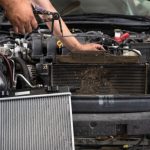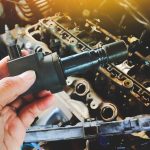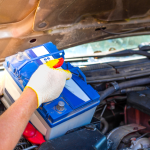A gleaming car exterior is a point of pride for any owner. But achieving that showroom shine and preserving a protective coating requires more than a simple wash and wax. This is where detailing comes in, utilizing specialized tools and equipment to elevate car care to an art form.
Whether you’re a seasoned professional or a weekend warrior looking to pamper your ride, understanding the essential tools and equipment is crucial for achieving outstanding results.
Why Invest in Quality Tools and Equipment?

Investing in high-quality tools and equipment is paramount for successful detailing. They not only make the job easier and more efficient but also help prevent damage to your car’s delicate finish. Cheap or improper tools can lead to swirl marks, scratches, and other imperfections that detract from the beauty and value of your vehicle. Think of it like this: you wouldn’t use a rusty saw to craft a fine piece of furniture, would you? The same principle applies to car detailing. Quality tools ensure quality results and protect your investment.
Washing and Drying: The Foundation of Detailing
The first step in any detailing process is a thorough wash and dry. This removes dirt, grime, and contaminants that can dull the shine and damage the paint. For this crucial stage, microfiber wash mitts are essential. They are gentle on the paint and effective at lifting dirt away from the surface, unlike sponges or brushes, which can trap dirt and cause scratches.
Another important tool is a grit guard, which sits at the bottom of your wash bucket and prevents dirt from being picked up by your wash mitt and reapplied to the car. Using a dedicated car wash soap is also crucial. These soaps are pH-neutral and formulated to clean effectively without stripping away wax or protective coatings, unlike dish soap, which can be harsh and damaging. Finally, high-quality microfiber drying towels are essential for absorbing water quickly and preventing water spots. These towels are incredibly soft and absorbent, minimizing the chances of scratching the paint during drying.
Decontamination: Removing Embedded Contaminants
Even after a thorough wash, your car’s paint may still harbor embedded contaminants like iron particles, tree sap, and industrial fallout. These contaminants can roughen the paint surface and compromise the effectiveness of waxes and coatings. A clay bar or mitt, used with a lubricant, gently lifts contaminants from the paint surface, leaving it smooth and clean. Think of it as a deep cleanse for your car’s paint, removing impurities that a regular wash can’t tackle.
Iron decontamination sprays are also useful. These sprays react with iron particles, turning them purple and making them easier to rinse away. This is particularly helpful for those who live in areas with high industrial activity or near train tracks, where iron particles are more prevalent. For stubborn tar, adhesive residue, and other sticky contaminants, a specialized tar and adhesive remover is necessary. These solvents effectively dissolve these stubborn substances without harming the paint.
Polishing: Perfecting the Paint
Polishing is the process of removing minor imperfections from the paint, such as swirl marks, light scratches, and oxidation. This step restores clarity and gloss to the paint, preparing it for the application of wax or a protective coating. A dual-action polisher is a valuable tool for this process. It oscillates and rotates simultaneously, providing a safe and effective way to polish the paint without the risk of burning through the clear coat. This type of polisher is user-friendly, even for beginners, and delivers professional-level results.
Polishing pads, used in conjunction with the polisher, come in various types, ranging from cutting pads for removing deeper imperfections to finishing pads for refining the paint and enhancing gloss. Choosing the right pad depends on the severity of the imperfections and the desired level of correction. Polishing compounds, which are abrasive liquids or pastes, are used with polishing pads to remove imperfections and restore clarity to the paint. These compounds come in different levels of aggressiveness, allowing you to tailor the polishing process to the specific needs of your car’s paint.
Protection: Preserving the Shine
The final step in the detailing process is applying a protective layer to the paint. This can be a wax or a ceramic coating, both of which provide a barrier against UV rays, contaminants, and minor scratches. Waxes offer a traditional form of protection, providing a warm glow and enhancing the depth of the paint. Ceramic coatings, on the other hand, offer a more durable and long-lasting form of protection, creating a hard, hydrophobic layer that repels water and contaminants.
For applying waxes and coatings, microfiber applicator pads are ideal. They allow for even and smooth application, ensuring complete coverage and minimizing streaks. Soft, clean microfiber towels are then used to buff off excess wax or coating, leaving a streak-free shine. These towels are essential for achieving a flawless finish and avoiding swirl marks.
Maintaining the Coating: Preserving the Protection
Once you’ve applied a protective coating, proper maintenance is crucial for preserving its longevity and effectiveness. Using a pH-neutral car wash soap specifically designed for coated cars is essential to avoid stripping away the protection. These soaps are gentle yet effective, maintaining the integrity of the coating while removing dirt and grime. A drying aid can also be helpful. It helps to sheet water off the car, reducing the risk of water spots and making drying easier. This is particularly useful for those who live in areas with hard water.
A dedicated coating maintenance spray provides additional protection and enhances the gloss of the coating. These sprays are formulated to replenish the coating’s hydrophobic properties and maintain its shine. Regular use of a maintenance spray can significantly extend the life of the coating and keep your car looking its best.
Beyond the Basics: Additional Tools and Equipment
While the tools and equipment mentioned above are essential for basic detailing, there are many other specialized tools that can further enhance your detailing arsenal. For cleaning wheels, various wheel brushes are available, designed to tackle different wheel designs and effectively remove brake dust and grime. Tire dressing applicators help to apply tire dressing evenly and prevent it from slinging onto the car’s paint. These applicators ensure a clean and professional-looking finish on your tires.
Specialized glass cleaners and microfiber towels help to achieve streak-free windows and mirrors. These cleaners are formulated to cut through grime and leave a crystal-clear finish without streaks or residue. For the interior, various brushes are available for cleaning different surfaces, such as carpets, upholstery, and air vents. These brushes help to remove dirt and debris from hard-to-reach areas, keeping your car’s interior looking pristine. A powerful vacuum cleaner with various attachments is essential for cleaning the interior thoroughly. This will help remove dust, dirt, and debris from carpets, seats, and other interior surfaces.
Equipping Yourself for Detailing Success
Detailing your car is a rewarding experience that can significantly enhance its appearance and value. By investing in the right tools and equipment and understanding the proper techniques, you can achieve professional-level results and keep your car looking its best for years to come. Remember, the key to successful detailing lies in using the right tools for the job and taking the time to care for your car’s delicate finish. With the right tools and a little effort, you can transform your car from ordinary to extraordinary.











